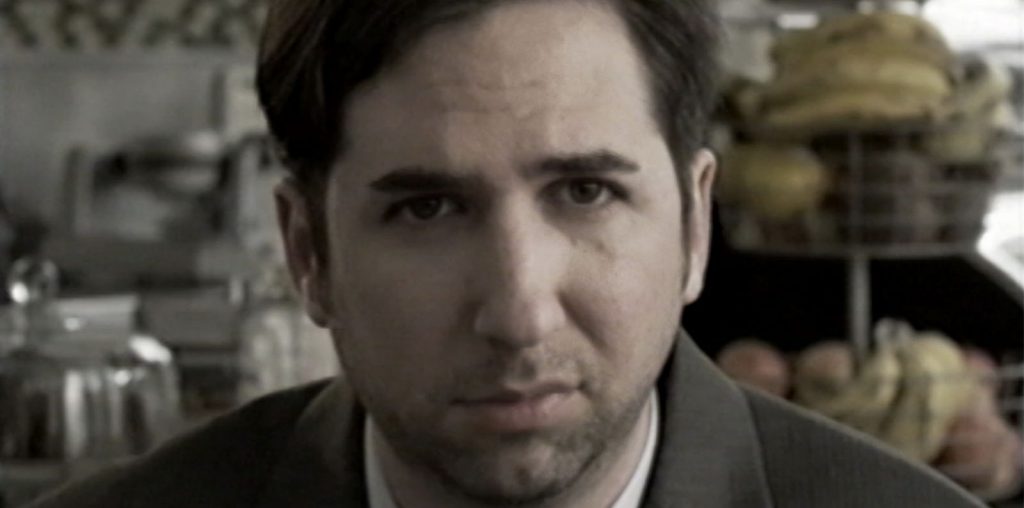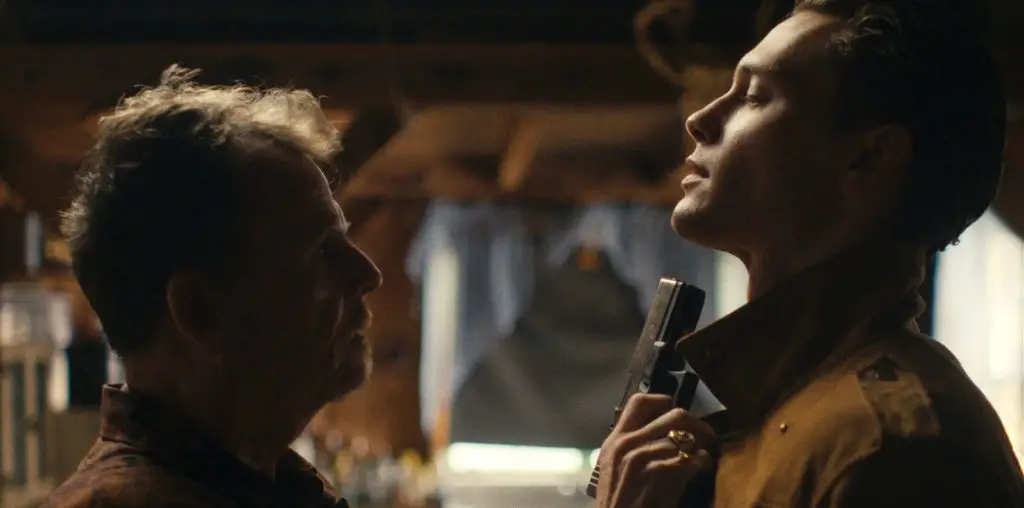
And here we go, another digitally enhanced Lucas treasure, re-packaged and ready for mass consumption. Does he replace the police officers’ night sticks with stuffed animals to dull the beating scenes? No? Uh… does he include a musical number with a CGI Robert Duvall proclaiming his love to Maggie McOmie’s LUH? No? Hell, man, does he do ANYTHING with his digital re-visitations to ruin the film? Tunnel monkeys!?! See, I knew he couldn’t help himself…
All kidding aside, however, the director’s cut of “THX 1138” may very well be the first time Lucas has gone back and tinkered with his work, leading to a better viewing experience. Except for the brief tunnel monkeys segment mentioned above (that does nothing to lessen the rest of the film’s impact), the digital effects only enhance the film, feeling neither out of place or excessive. There are even times when one wracks one’s memory trying to figure out if what they just saw was added this time around or existed all along. The inability to truly grasp those moments is a testament to the seamlessness of Lucas’s additions. But enough about the CGI tweaking, is this film really Lucas’s unloved masterpiece? The film that got lost in the shadow of “American Graffitti” and “Star Wars” while, actually, being a better film?
Possibly. It definitely lacks the cheese that tends to find its way into the “Star Wars” films and as far as a philosophical epic it has more to say in 88 minutes than “American Graffitti” does in 110. Were this not the $777,777 budgeted Lucas film produced by Coppola’s American Zoetrope in the late ’60s, you could almost believe it could’ve been made yesterday, playing the festival circuit and being hailed as genius. It’s simply been a victim of its own association. Still, a brilliant film nonetheless.
The film centers on the story of Robert Duvall’s THX 1138. A worker drone, THX is slowly being taken off his mind-numbing drug diet by his “roommate” and (forbidden) sexual partner LUH 3417. In no short form evoking the religious allegory of Adam and Eve, Maggie McOmie’s LUH is not so much offering THX the apple as forcing it on him when he is not looking. This makes his awakening more to be pitied than impressed with, as he never asks for what is to come his way, but nonetheless finally commits to it and starts a forward motion that doesn’t end until the credits roll.
Despite being the lead character, THX is not half as compelling as Donald Pleasence’s SEN. Also awakened and imprisoned, SEN is the Ego and Superego of Lucas’s social commentary, all theory and no action, while THX’s Id is nothing more than emotional inertia ever moving forward. Alone, THX might never have thought about the greater aspect of his own forced rebellion and where that places him in (outside of) society, but alone SEN would never have tried to escape either. They are, together, Lucas’s perfect critique on the human race, even more so than the society to which he sets them at odds.
And that is what makes SEN that much more interesting. We can see his gears grinding as he contemplates every action. SEN is all intellectual bluster and bravado, but once free and running with THX finds himself wracked with regret. To keep the Garden of Eden allegory alive, SEN is the part of Adam that wants back in, while THX is the part that could never be allowed to return. The scene where SEN is finally taken back into custody and he laments that he wants to be a part of society but knows too much to ever fit back in is heartbreaking. The fact is that SEN will never be comfortable anywhere, he thinks too much, questions too much. Point, Lucas.
The rest of the film is a prison break, the animalistic inertia of forward movement being chased down by the confines of a structured society. The beauty of the chase is not so much in that we’re hoping that THX escapes (escapes what really? To where?) but rather we get to watch him wreck financial damage to his former community via the budget allotted for his capture, which is gloriously counted down for us as the chase continues. THX’s worth is defined by this budget, and once he exceeds it, he is no longer worth pursuing. Thus the chase ends, as does his running. We never get to see his full reaction to the end of the road, but I can imagine it’s like a rabbit that has been spooked finally realizing that it’s been running for 30 minutes and is no longer anywhere near anything it remembers as home.
Masterpiece? I’d hazard to say so, for as much of what it says to what it leaves to the viewer. Seeing this film is much more satisfying on every level than putting yourself through one of the previous two “Star Wars” prequels, and the release of this cut into theaters makes one wonder what happened to this incredibly talented filmmaker who at one point did have important things to say, but then kind of faded away. If “THX 1138” were a metaphor for Lucas’s life, one could make an argument that after “Empire Strikes Back” Lucas/SEN went back to the collective and Lucas/THX has been mindlessly running forward since. After “Star Wars: Episode III,” the community budget runs out on Lucas and I’m curious as to how this will all end. Sunny freedom? Gracious reintegration with the collective? Tunnel monkeys? We’ll find out soon enough.
Disagree with this review? Think you can write a better one? Go right ahead in Film Threat’s BACK TALK section! Click here>>>

